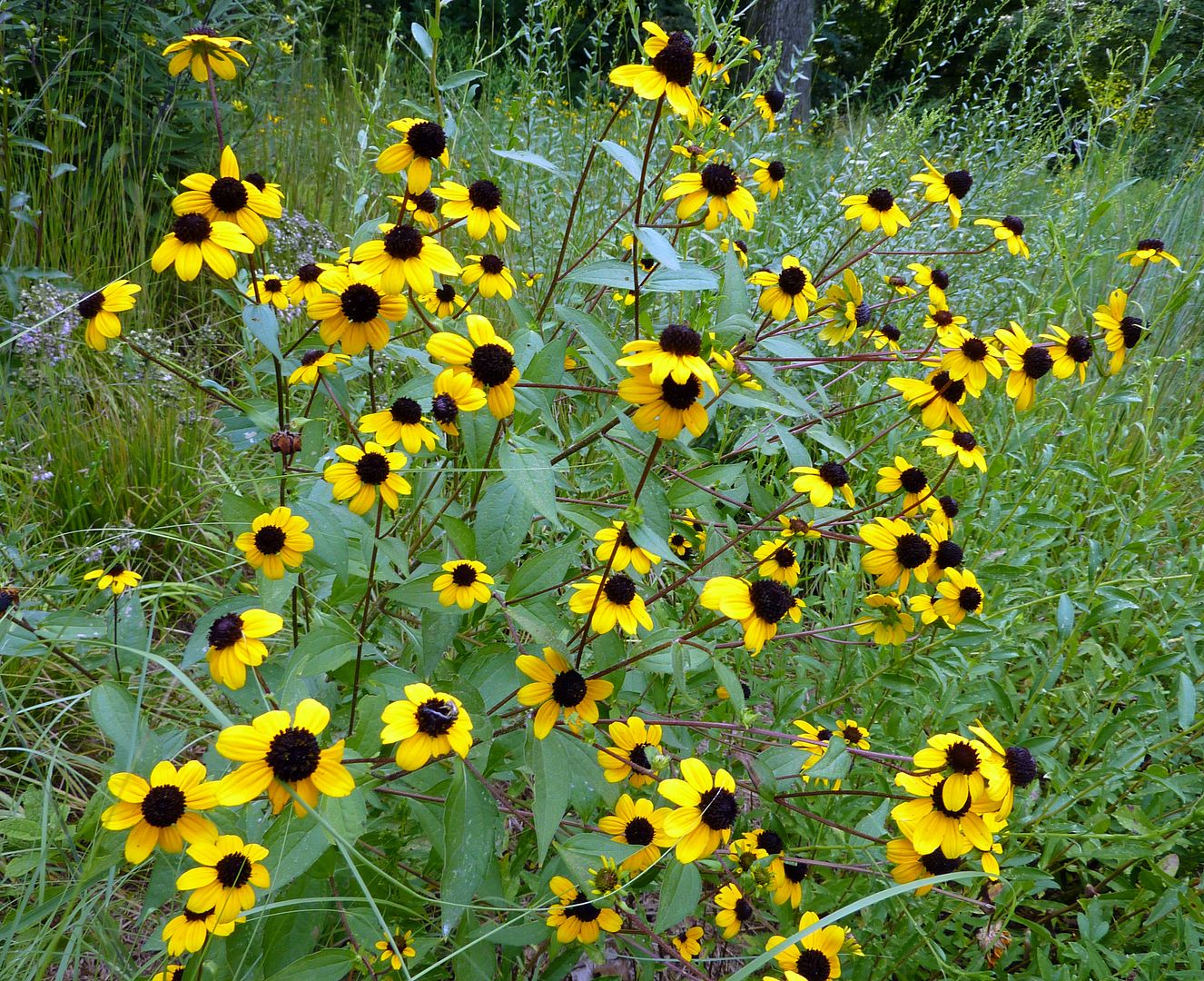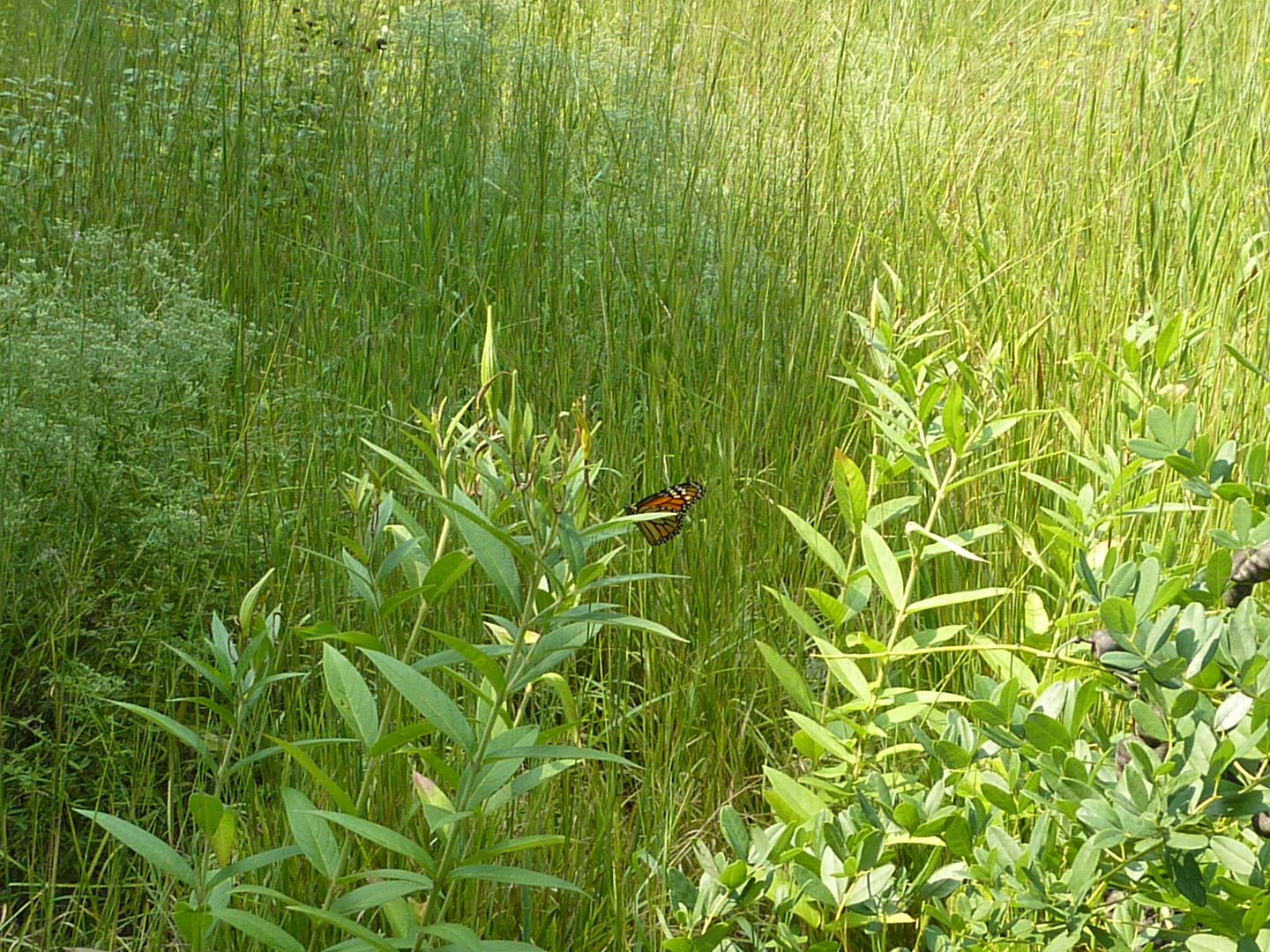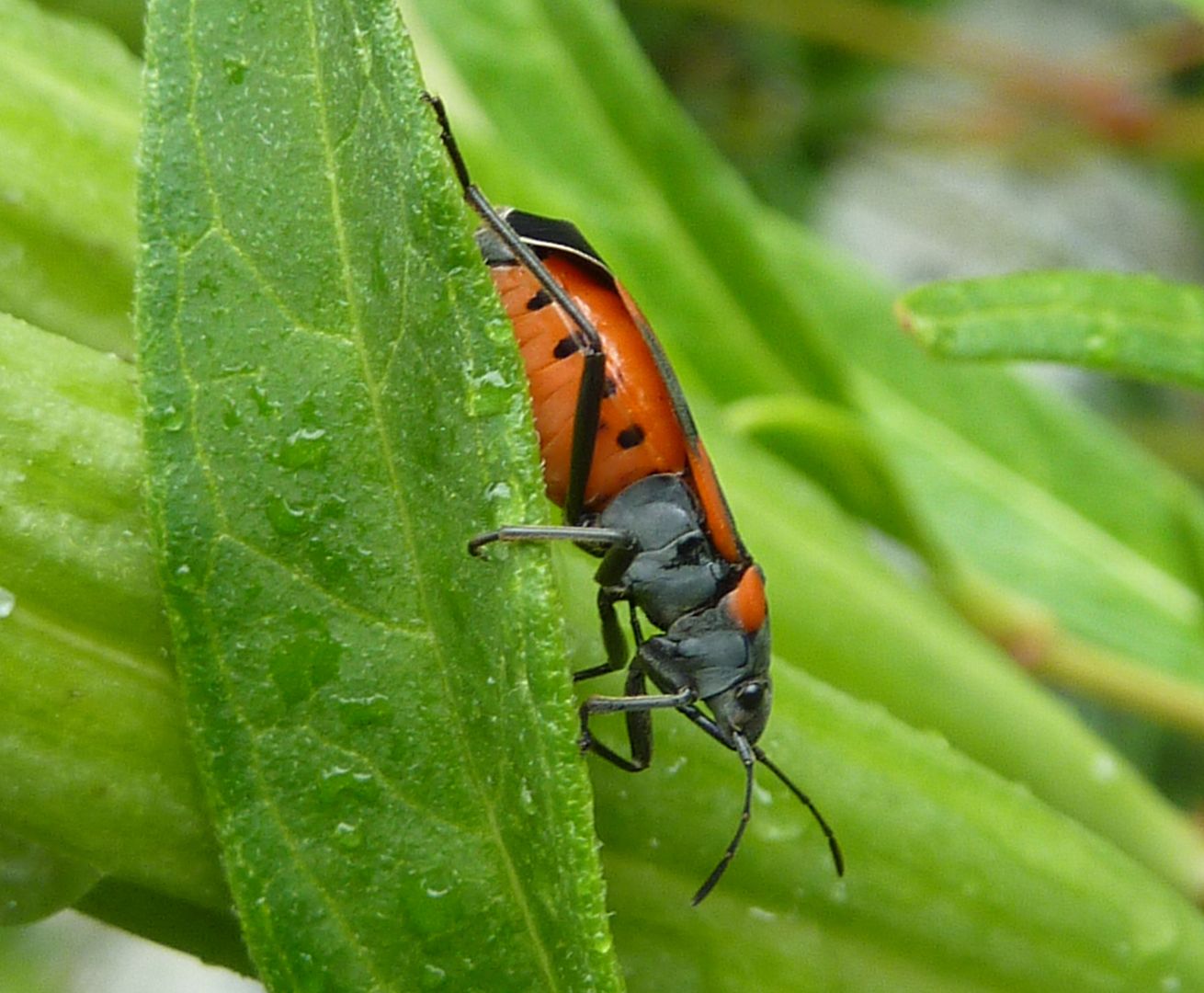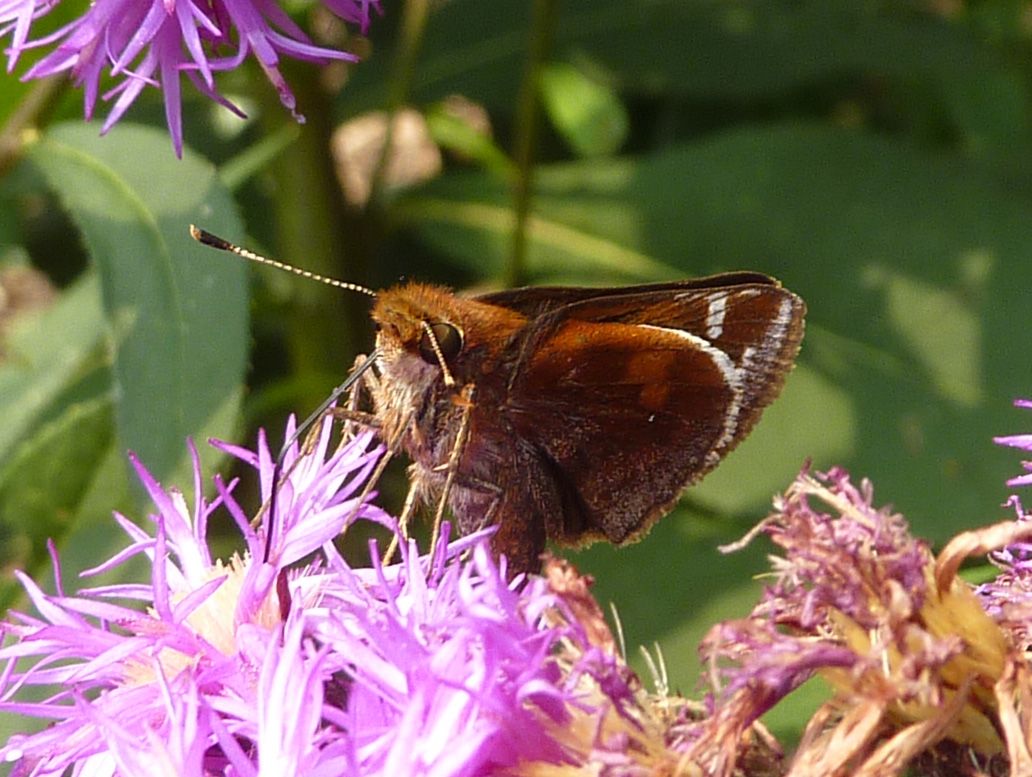Even here peering through a mossy clearing the grasses barely look 3' tall. As the grasses grow taller they become easier to appreciate.
Before going to the meadow they had patches of Spotted Touch-me-not, Impatiens capensis, flowering. This native Impatient is anything but. Seeds germinate after 2 winters and the resulting plant is an annual. They're fun plants because of their exploding seed pods, but if you're looking for any sort of predictability as to where they'll come up, you need to plant seeds in the same spot 3 years in a row. From there they're a delightful weed, growing in wet spots, and attracting hummingbirds. (Supposedly the sap helps clear up poison ivy but I'm not advocating holistic remedies. I would be willing to try it out though.)
Bottle Gentian, Gentiana andrewsii, was also in bloom. These flowers are fussy and hard for most bees to open. The idea with the tight petioles is to discourage ants from stealing nectar. As you can see, carpenter bees and perhaps others, have little issue just cutting holes right through the flowers to get the nectar. This happens to a lot of tube and bell shaped flowers.
Moving out into the meadow, the real highlights were the Wild Senna, Cassia hebecarpa, and assorted Joe Pye Weeds, Eutrochium fistulosum and Eutrochorium maculatum.
Note: Joe Pye Weed was formerly in the genus Eupatorium. That genus still exists but I believe it consists mostly of the taller white flowering species that aren't Boneset. Eutrochium includes all purple/pink flowering members of Eupatorium now. Personally I think this is a conspiracy concocted by the plant labeling community.
Anyway, I feel like they understated their Wild Senna a bit. It was in full bloom and not really mentioned until I asked. They did this with a number of plants but it's not like it was a bad tour. Actually we got up close and personal with 25 meadow species with lots of other goodies along the way. The instructor was more than happy to talk about all plants in the gardens people asked about.
This is the host plant to the Cloudless Sulphur, Phoebis sennae, which isn't the most common butterfly around, but it's certainly unique enough looking to warrant their host plant in any butterfly garden. The pea-like seeds are also an excellent food source for certain birds.
Brown-Eyed Susan, Rudbeckia triloba. This is also called Thin-leaved Coneflower, but I feel that implies a different genus. It didn't seem to be spreading around like the other Rudbeckia species in their meadow.
Monarchs were all over their milkweed. They have lots of species of milkweed there but most of it is well past flowering. Also an abundance of insects that help nibble the plants to the ground were starting to show up.
I found this skipper on their Ironweed, Vernonia noveboracensis, to be rather attractive. The colors reminded me of a robin or some sort of bird.
There were many other things flowering in their meadow, it's just I'm not into things like Obedient plant, Physostegia virginiana, and some type of perennial sunflower, Helianthus microcephalus. There were some early Goldenrods too.













